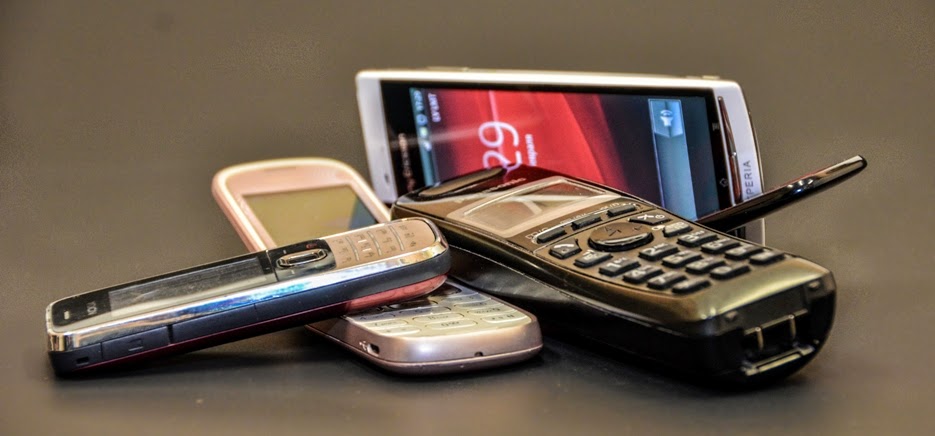 |
| Ara Smart Phone (rear look) |
Ever thought of having a gadget which comes with customized
features of your choice? If you are one of those who love to make things their
own ways, then this is your chance to get an ultimate smart phone that will
define your choice and cater to your needs with equal efficiency. Google takes
smart phones to the next level with their upcoming Project Ara, a project under
Google's Advanced Technology And Projects group (ATAP). Motorola Ara is a smart
phone which can be custom designed with features that the consumers want in
their phone. You can even replace or update the mobile parts to customize your phone. What it means is that, you don’t need to buy an entirely new phone
just because you have an out dated processor. With Ara Smart Phones you
can just have the processor replaced with an updated one just like you replace
an external memory card in your phone with a new one with more space. Ara is 100 percent customizable when it comes to the features of your phone.
The new phone block concept has been ingenuously applied to
change the entire way we deal with mobile phones. Let us see what it is all about.
 |
| Ara Smart Phone Design and Concept |
The Design:
Motorola Ara Smart phones are phone block or modular phones
to be specific. The Phone mainly consists of a basic part which they call the
endoskeleton (endo). The endoskeleton consists of different slots (similar to
the memory slots in today’s phones), which are connected to each other
and simply have the purpose of rerouting data packages. There will be different
modules or units (for e.g processor, display screen, camera, battery, keyboard
etc.) which can fill up these slots. Combining each of these parts you will get a
complete mobile with optional choices for modules of your preferences. You can
change the modules any time you want.
Primary
Parts:
Basically the Ara smart phone consists of two types of
parts, the endoskeleton and the modules.
 |
| Front Facing Endo Rear Facing Endo |
The Endoskeleton: The endoskeleton of the Ara Smartphone consists of a basic structure as shown
in the picture (right side). It has several slots varying in sizes. The slots size varies
from one by one inch to one by two inch and two by two inch. The endoskeleton
or endo also consists of a small battery as a reserve for the purpose of
swapping the modules.
 |
| The Modules |
The Modules: The
modules are small phone blocks that can be attached to the main skeleton and
removed as per the requirements. There are front facing modular blocks as well
as rear facing modular blocks. The front facing modular blocks are meant
primarily for holding the display screen and other necessary modules. The rear
facing modular may be a battery, wify unit or camera. The module mainly
consists of an aesthetically designed outer cover giving it a look of a pebble.
Inside the cover or case there is circuit board, chipset and other hardware covered
with a safety shield. The module remains attached to the endo with the help of
an electro permanent magnet which can be turned off or on. These modules come
in different sizes corresponding to the slot sizes of the endo. The outer cover
or case of the module can be custom designed and 3D printed from a 3D printer to render a personalized look. The modules can be anything for your phone. It
can be a camera, a processor, a wify unit, battery, antenna etc.
Benefit of Ara Smart
Phones over other smart phones:
 |
| Various modules and sizes of Ara Smart Phone |
Now, if might ponder over the fact that why would you take the
trouble of buying pieces of a smart phone separately when you can get all of
them in one piece and ready to be used in any other conventional mobile phone. Apart, from the
fact that Ara Smart Phones will give you the option to custom select your phone
features there are many other benefits you may consider worth.
1.
Ara Smart Phones are meant to have a life of
about 6 years before the base endo gets outdated. In contrary to the current
scenario, where a smart phone gets outdated every year or two and thus reducing
its life to a maximum of two years, Ara can last longer and reduce electronic
waste we produce nowadays.
2.
The customization range of Ara is great. Not
only you can customize the modules of your choice, you can also customize the
appearance of the phone with time. It gives you more flexibility as a user. One
can have a common family module which can be swapped between users in the
family when needed. For instance, when you are going for a meeting, you might
not require a camera but a wifi unit and an extra battery module can help you
at your work. Similarly, you can have one high end camera module instead of
separate low end cameras for all family members’ mobile. You can share the
module with all your family whenever there is a need.
3. The base model with its minimum features offers
a great price value for the feature phone users. With the starting price of
just $50 for a smart phone, it is a real affordable one for the 5 billion feature phone users.
4. The modules will be available from Google as
well as third party developers, making it easier for you to get new modules of
your choice from the great many varieties available in the market.
5. Features of smart phones are no longer limited
to the giant smart phone manufacturers who consider a general demand for a given
feature before employing it into the smart phone. With Ara Smart Phone, the
scope of getting different kinds of modules with innovative features is limitless. One can have
practically any kind of module, starting from health check up devices to night
vision cameras.
 |
| The feel |
As team member Paul Eremenko says, Ara is a platform at hardware level what Android is at software level. Once you have the basic Ara endo platform, you can buy any module of your choice to customize your device experience, just the way you buy apps from Google store or a third party. Google is to share their Modular Development Kit (MDK) with developers who can have them totally free of cost. MDK is open source and can be employed by any developer without having the need of licensing or sharing loyalty of the product. Using these modular kits developers can provide the users with plenty of module options.
The phone, as Google says, is made for the entire world. You
can upgrade the phone with all kinds of features depending on your budget. However, a basic model (Grey Phone) will be released by Google, which is an affordable
model priced at $50. It consists of few basic modules including a display
screen, a low end application processor, a wify module and a battery. One can
add various other modules if one wants to. Therefore, the price of the phone
totally depends on the user and not the manufacturer. The target user of this
phone includes 5 billion feature phone users and 1 billion smart phone users as well. The Ara smart phone is expected to be commercially launched by the middle of the next year i.e. 2015.
With such a new and innovative concept, Project Ara has the
potential to change the way we use smart phones altogether. It can bring a massive change in the mobile market just the way Android changed the mobile platform. Your phones can now get smarter and custom
friendly at the same time.
 |
| Image from www.motorolaara.com |










